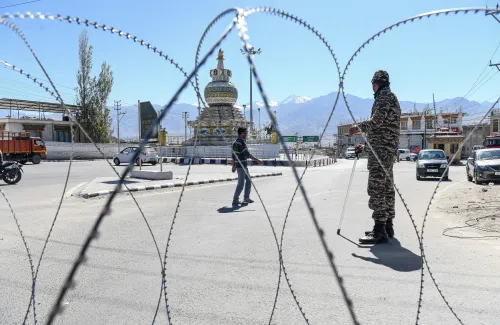Is MoS Kirti Vardhan Singh Leading the Indian Team at the Conservation Congress in Abu Dhabi?

Synopsis
Key Takeaways
- India's National Red List Roadmap aims to assess and monitor species conservation status.
- Strong legal frameworks like the Wildlife Protection Act support biodiversity efforts.
- India is home to four global biodiversity hotspots.
- Collaboration with IUCN and local surveys enhances conservation strategies.
- Traditional knowledge is essential for effective biodiversity conservation.
New Delhi, Oct 9 (NationPress) During the inauguration of the program for launching India’s National Red List Roadmap at the IUCN World Conservation Congress in Abu Dhabi on Thursday, Union Minister of State (MoS) for Environment Kirti Vardhan Singh emphasized that the document showcases the nation’s commitment to biodiversity documentation and conservation.
He described the IUCN event as a manifestation of our shared dedication to protecting nature and fostering a sustainable future.
The MoS for Environment, Forest and Climate Change unveiled India’s Vision 2025-2030 for the National Red List Assessment (NRLA), a detailed framework developed by the Zoological Survey of India (ZSI) and the Botanical Survey of India (BSI) in partnership with IUCN-India and the Centre for Species Survival, India.
“This vision delineates our strategy for a nationally coordinated, inclusive, and science-based system to evaluate and monitor our species’ conservation status,” he declared.
In his address, the Minister highlighted that India ranks among the world’s 17 megadiverse nations, boasting four of the 36 global biodiversity hotspots: the Himalayas, the Western Ghats, Indo-Burma, and Sundaland.
Despite covering just 2.4% of the planet's land area, India is home to nearly 8% of the world's flora and 7.5% of global fauna, with 28% of its plants and over 30% of its animals being endemic.
India has established strong legal frameworks for biodiversity protection, prominently featuring the Wildlife (Protection) Act, 1972, which was recently revised in 2022 to enhance protections for species included in CITES appendices.
“To meet our obligations under the Convention on Biological Diversity (CBD) and the Kunming-Montreal Global Biodiversity Framework (KM-GBF), India has initiated the National Red List Assessment initiative, aligned with global IUCN standards,” Singh stated.
This initiative aims to create a nationally coordinated red-listing system, serving as a tool for precise assessments, conservation planning, and informed policy-making. The Minister underscored the crucial role of traditional knowledge documentation in biodiversity conservation.









